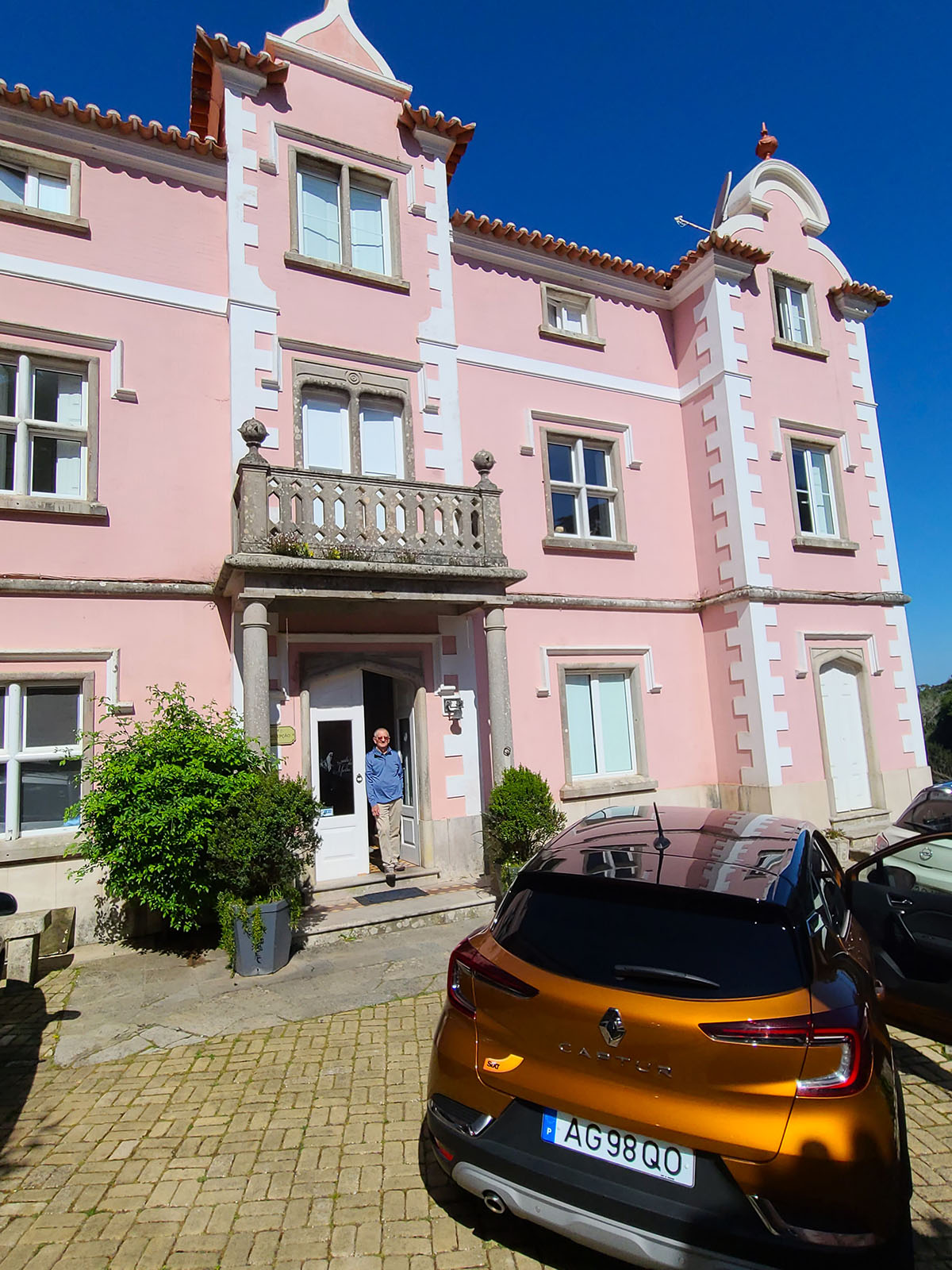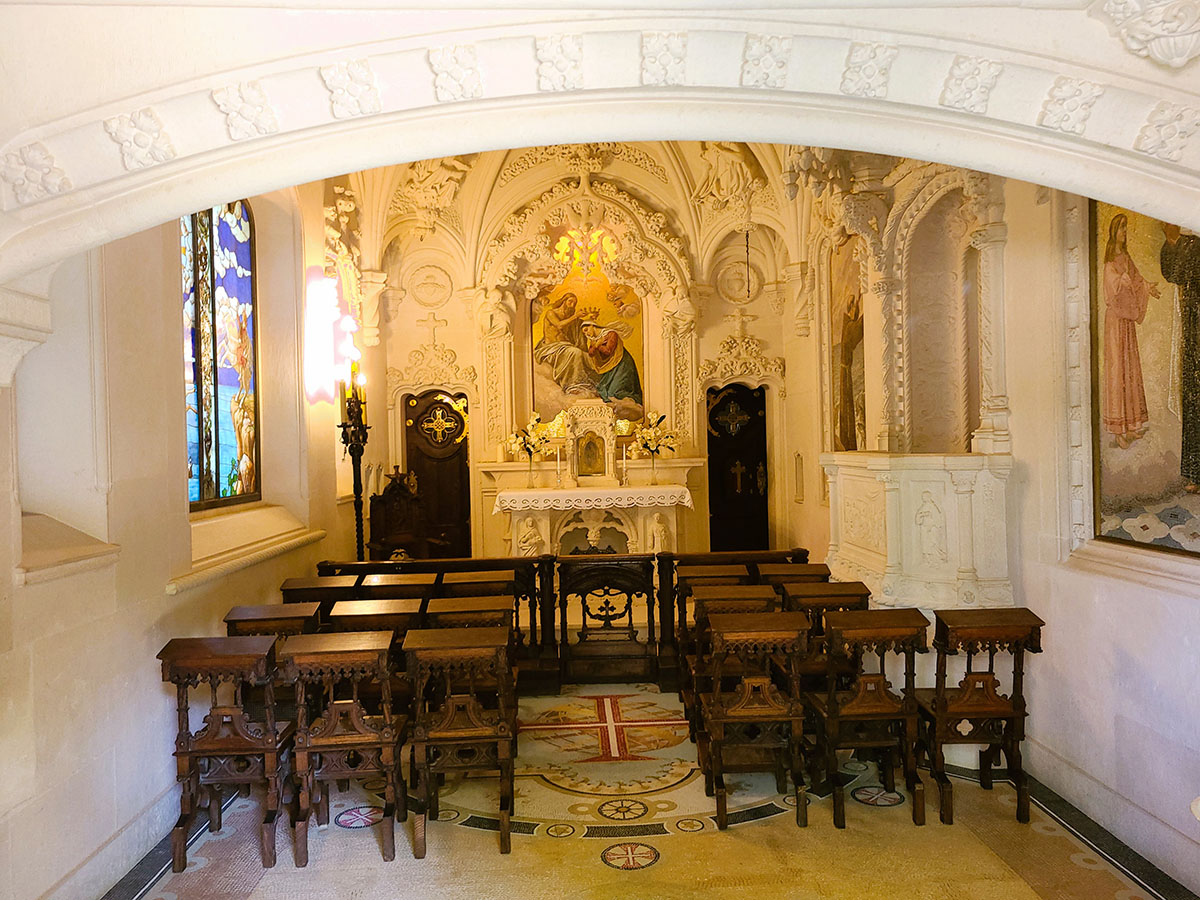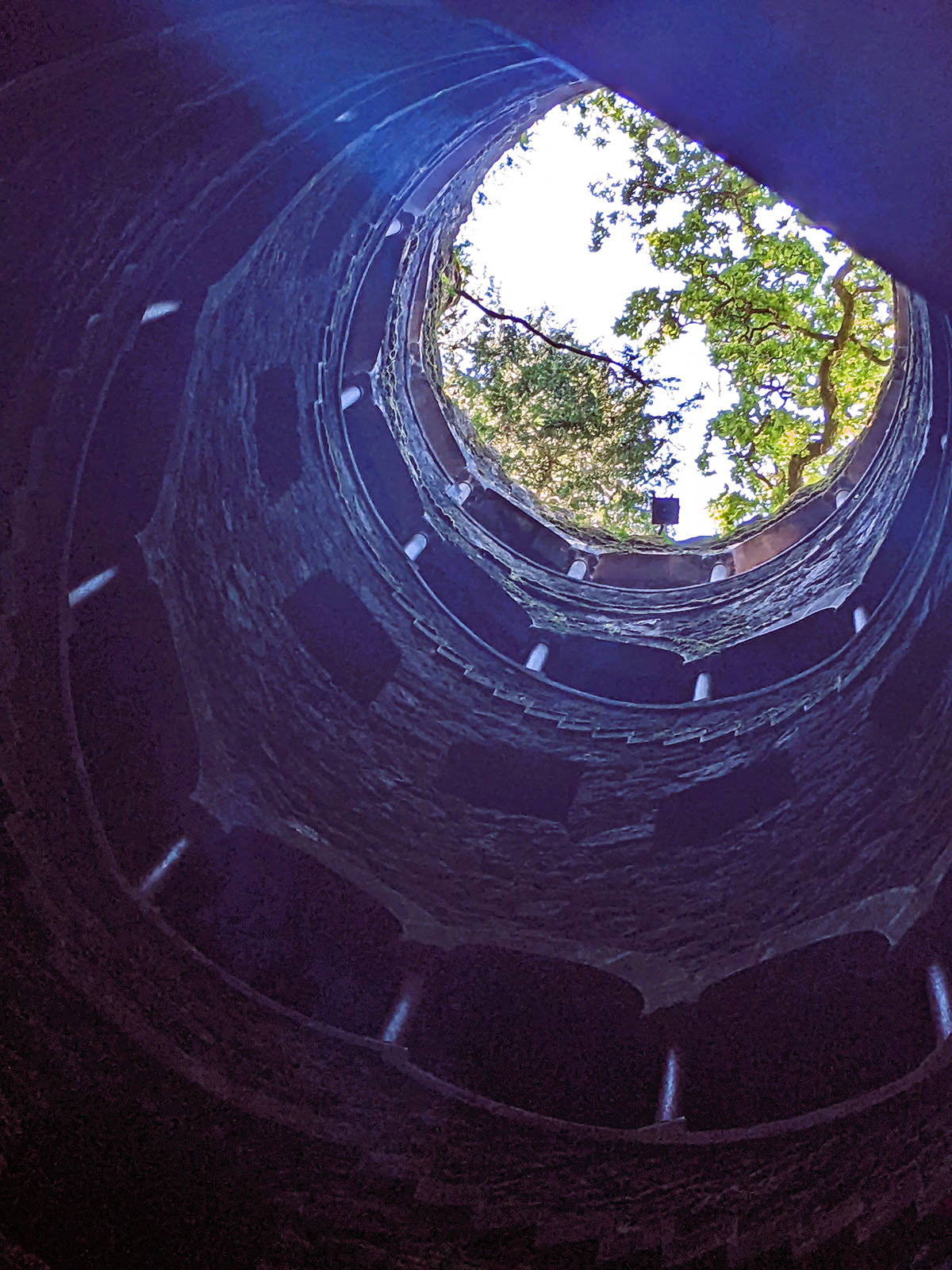Sintra – Portugal
After exploring Lisbon for three days, we rented a car at Humberto Delgado Airport and set out on our three-week road trip of Portugal.

Thirty minutes later, we were winding along a two-lane tree-lined road that led to Sintra. A jewel of a small town in a semi-tropical setting where morning mists cast a thin veil over the hills and forests, rich in vegetation, birds, and spring flowers that burst with color.
We spent a night at Quinta Das Murtas, a 19th-century villa/palácio that overlooks a jungle of greenery.
 Quita Das Murtas.
Quita Das Murtas. Quinta Das Murtas veiled in early morning mist.
Quinta Das Murtas veiled in early morning mist.Today it functions as a charming B&B where the interior design is in keeping with an authentic Portuguese villa outfitted with antiques and original art. The spacious bedrooms, which offer up views of the lush surroundings, are tastefully furnished with neither clutter nor kitsch. The family sitting room, while elegant, is cozy, welcoming, and full of natural light.


A substantial buffet breakfast is served in a glass-enclosed dining room with views of the surrounding villas painted in shades of pink, blue, yellow, and white that one sees throughout Portugal.


Quinta Das Murtas is a five-minute walk down a shaded tree-lined lane to the village where restaurants, boutiques, and bakeries selling irresistible Pasteis de Nata, occupy the repurposed 19th and early 20th-century historic homes that surround Praca da Republica – Republic Square.


We hopped on the 434 bus, which stops across the road from Praϛa da Republica, and soaked up the stunning scenery along the route, which loops around the mountain, to Palácio da Pena. If we’d had more time, we would have chosen to walk along the wide sidewalk dotted with sculptures from the village to the train station and caught a bus from there to the Palácio. Most tour guides recommend taking a day trip from Lisbon or spending one night in Sintra. That’s far too little time, especially if one wants to hike the forests, explore the trails, enjoy the village and the major sites: Palácio da Pena, Quinta da Regaleira, Parque e Palácio da Monserrate, and a visit to the beach – Praia da Adraga – flanked by soaring cliffs that drop into the ocean.
 Scenery-along-the-bus-route.
Scenery-along-the-bus-route.Quirky, colorful, Palácio da Pena blends the Moorish, British, Portuguese, and Indo-Gothic architectural Romanticism of the 19th century, into an eccentric, Crayola-colored structure. It sits on a hill commanding a panoramic view of the landscape.


The original building on the site was a monastery dedicated to the order of St. Jerome. It was severely damaged by an earthquake in the mid-18th century and remained abandoned until discovered by King Ferdinand II in 1830. Ferdinand built his family’s summer castle on the site and established an enchanting semi-tropical forest that cascades down the hill. Today it ranks as the most diverse arboretum in Portugal. A hike through the forest is one of the highlights of a visit to the Palácio.
 Interior courtyard of the Palacio.
Interior courtyard of the Palacio.
The lines to enter the Palácio da Pena are never-ending. We found the best time to arrive was around 1:30 – 2:00 p.m. when the morning crowds departed and before the afternoon onslaught of tours.
Back to the village of Sintra to rest our weary feet and linger over a leisurely lunch in the spring sunshine.

It’s a fifteen-minute walk from Praϛa Republica to Quinta da Regaleria, another fairytale Palácio set in tranquil emerald-green gardens with little grottos, fountains, ponds, garden sculptures, a chapel, and underground tunnels.




The breathtaking, famous Well – Poϛo Iniciático (Initiation Well) – is unique and not to be missed. This is not a traditional Well. It curls deep into the ground in a spiral of hundreds of ancient stone steps. At the bottom, the tiles are imprinted with the cross of the Knights Templar. The base of the well then splits into three tunnels. The entire experience is surreal.
 Looking down into the Well.
Looking down into the Well. Looking up at the trees from the bottom of the Well.
Looking up at the trees from the bottom of the Well. The walk down the Well.
The walk down the Well. Exploring the tunnels.
Exploring the tunnels.As one explores this captivating town, one has only to look up to catch sight of Castelo dos Muros – the Moorish Fortress that stands on the highest peak. It was constructed in the 8th and 9th centuries by the Arab rulers of Lisbon to spot invaders. While the outer walls are intact, it is said that the interior is not much more than a pile of rocks.
 Castelo dos Muros.
Castelo dos Muros.Next time we visit Portugal, we’ll plan on three days in Sintra.
